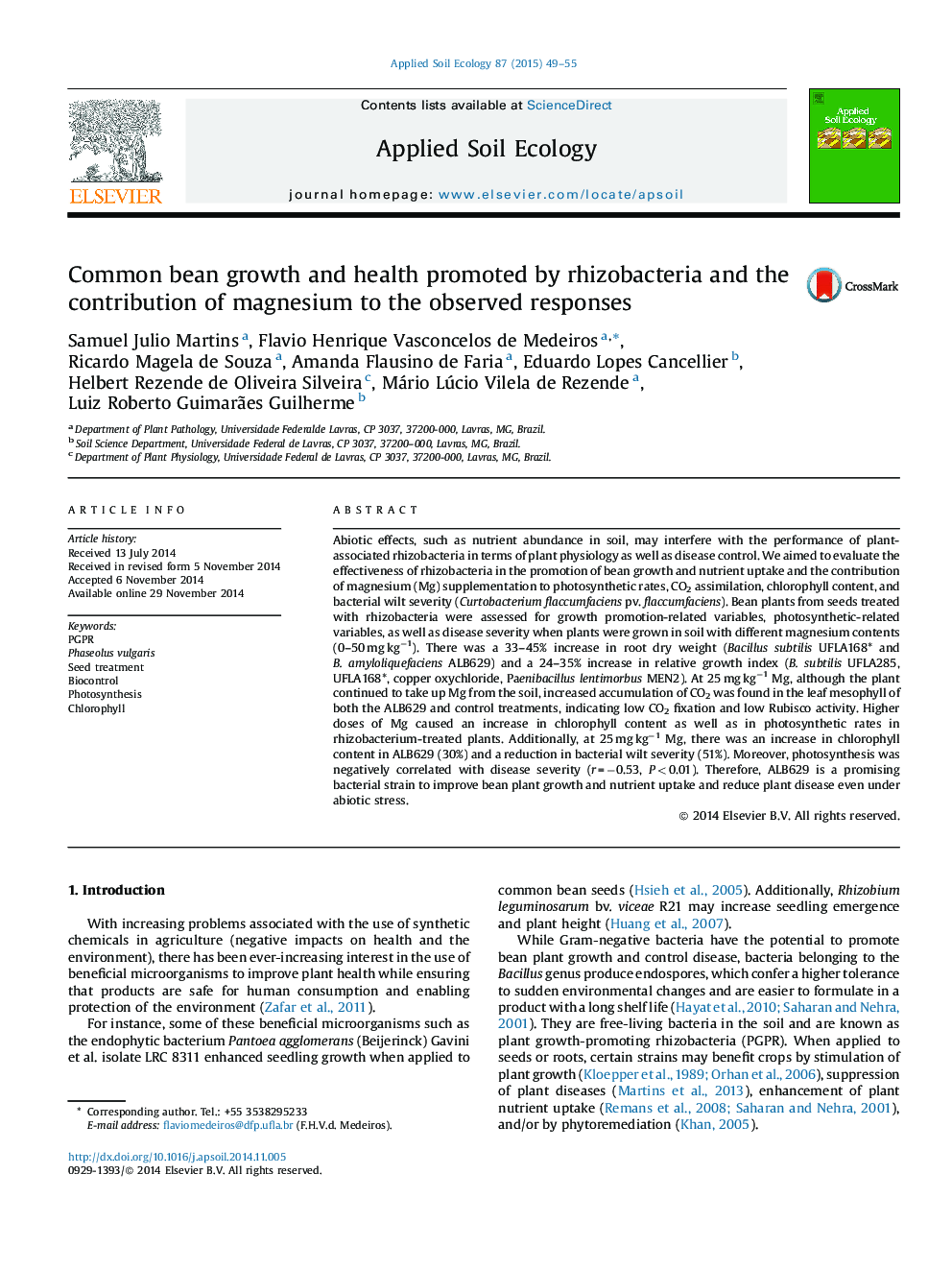| Article ID | Journal | Published Year | Pages | File Type |
|---|---|---|---|---|
| 4382049 | Applied Soil Ecology | 2015 | 7 Pages |
•Rhizobacterial strains promoted common bean growth.•Bacillus amylolicefaciens ALB629 increased Mg content of shoot tissues.•In higher Mg doses chlorophyll content remain steady for ALB629 treatment.•At 25 mg kg−1 Mg amendment, ALB629 controlled bacterial wilt.•The disease was negatively correlated with photosynthesis but ALB629 sustained higher chlorophyll content.
Abiotic effects, such as nutrient abundance in soil, may interfere with the performance of plant-associated rhizobacteria in terms of plant physiology as well as disease control. We aimed to evaluate the effectiveness of rhizobacteria in the promotion of bean growth and nutrient uptake and the contribution of magnesium (Mg) supplementation to photosynthetic rates, CO2 assimilation, chlorophyll content, and bacterial wilt severity (Curtobacterium flaccumfaciens pv. flaccumfaciens). Bean plants from seeds treated with rhizobacteria were assessed for growth promotion-related variables, photosynthetic-related variables, as well as disease severity when plants were grown in soil with different magnesium contents (0–50 mg kg−1). There was a 33–45% increase in root dry weight (Bacillus subtilis UFLA168* and B. amyloliquefaciens ALB629) and a 24–35% increase in relative growth index (B. subtilis UFLA285, UFLA168*, copper oxychloride, Paenibacillus lentimorbus MEN2). At 25 mg kg−1 Mg, although the plant continued to take up Mg from the soil, increased accumulation of CO2 was found in the leaf mesophyll of both the ALB629 and control treatments, indicating low CO2 fixation and low Rubisco activity. Higher doses of Mg caused an increase in chlorophyll content as well as in photosynthetic rates in rhizobacterium-treated plants. Additionally, at 25 mg kg−1 Mg, there was an increase in chlorophyll content in ALB629 (30%) and a reduction in bacterial wilt severity (51%). Moreover, photosynthesis was negatively correlated with disease severity (r = −0.53, P < 0.01). Therefore, ALB629 is a promising bacterial strain to improve bean plant growth and nutrient uptake and reduce plant disease even under abiotic stress.
